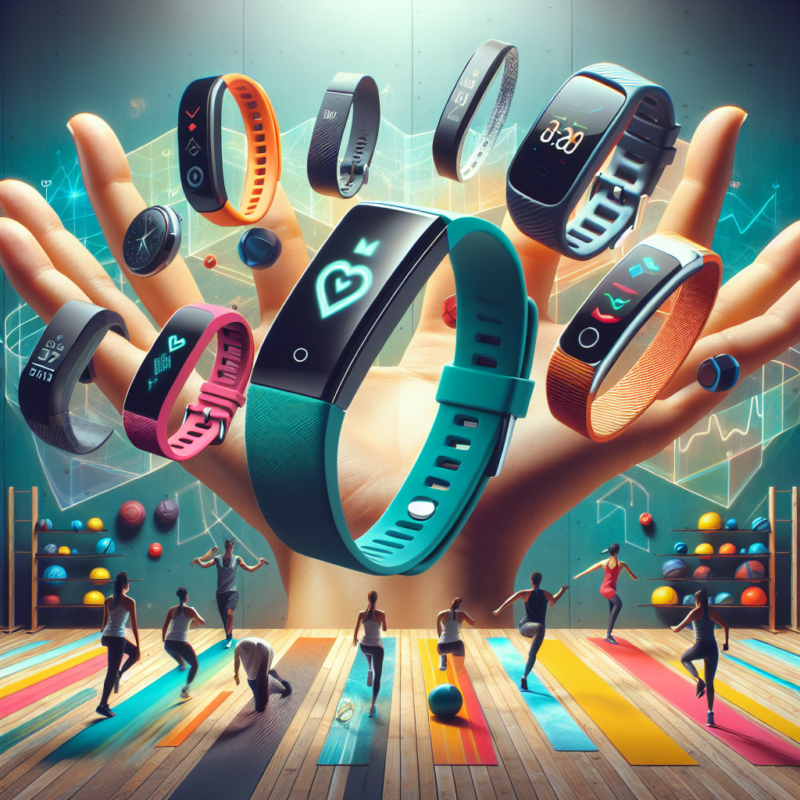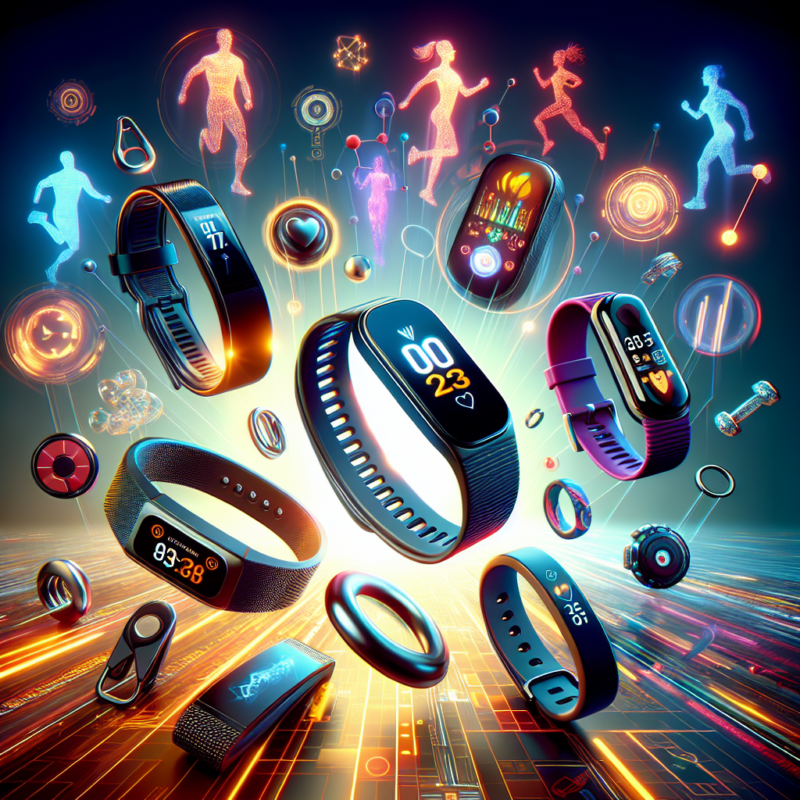The Future of Fitness: Exploring the Latest Wearable Technology Trends

Introduction
The landscape of fitness is rapidly evolving, with wearable technology at the forefront of this transformation. As we delve into The Future of Fitness: Exploring the Latest Wearable Technology Trends, it becomes clear that these innovations are not just trends; they are reshaping how we approach health, wellness, and exercise. From smartwatches to advanced fitness trackers, the integration of technology into our daily routines continues to enhance our ability to monitor health metrics, set fitness goals, and ultimately lead healthier lives. This article will explore the latest developments in wearable technology and their significant implications for the future of fitness.
The Rise of Smart Wearable Devices
As fitness enthusiasts seek more personalized and data-driven experiences, smart wearable devices have emerged as influential tools in the fitness realm. These devices, ranging from fitness trackers to smart clothing, offer a vast array of functionalities that cater to the unique needs of users. By continuously monitoring heart rate, steps, calories burned, sleep patterns, and more, these devices empower individuals to track their progress and make informed decisions about their health and fitness journeys.
Moreover, advancements in technology mean that smart wearables are becoming increasingly sophisticated. For instance, many new devices feature advanced biometrics, capable of measuring not only traditional metrics but also blood oxygen levels and even stress levels. This data can provide invaluable insights that allow users to adjust their workouts, recovery times, and overall health strategies, creating a more comprehensive approach to fitness. As the technology continues to advance, the integration of artificial intelligence will further enhance user experiences by providing tailored fitness recommendations based on individual data profiles.
Integrating Health Monitoring in Fitness Wearables
Health monitoring has become a pivotal aspect of fitness wearables, and this trend is expected to grow substantially in the coming years. Modern devices now boast capabilities that extend beyond physical activity tracking and delve into comprehensive health assessments. For example, wearables like smartwatches can monitor heart rhythm patterns to detect potential heart conditions, offering alerts when there are irregularities. This level of monitoring can be crucial for individuals with pre-existing health conditions, enabling proactive management of their health.
The data collected through these health-monitoring features can also be synced with healthcare providers, fostering a collaborative approach to health management. Patients can share their data with doctors, leading to improved accuracy in diagnoses and treatment plans. This integration signifies a paradigm shift in personal healthcare, where fitness wearables play an essential role in preventative healthcare and chronic disease management. The company’s focus on seamless data exchange will not only elevate the user experience but also established a more integrated health monitoring ecosystem.
The Role of Personalization in Wearable Technology
One of the most exciting trends in wearable fitness technology is the growing emphasis on personalization. Users today expect devices that not only monitor their activities but also provide customized feedback and insights that speak to their specific needs and goals. Companies are employing machine learning algorithms to analyze user data and deliver personalized workout plans, nutrition advice, and motivation strategies tailored to individual lifestyles and fitness levels.
Additionally, the rise of community-driven fitness apps is further enhancing the personalization trend. These platforms allow users to connect with like-minded individuals, share experiences, and receive support. Whether through virtual challenges or local fitness meet-ups, community engagement is transforming how people interact with their fitness journeys. Businesses that leverage this trend by integrating social and community aspects into their wearable technology can unlock untapped potential and foster long-term user loyalty.
Emerging Technologies Shaping the Future of Fitness Wearables
As we look toward the future, emerging technologies are set to have a profound impact on the capabilities of fitness wearables. One such technology is augmented reality (AR), which is beginning to find its application in the fitness sector. Imagine a user donning smart glasses that overlay workout instructions, nutritional information, and form corrections directly into their field of vision. This integration of AR can lead to more effective workouts by providing real-time feedback, enhancing user engagement, and ensuring that users perform exercises safely and efficiently.
Another groundbreaking innovation is the development of smart fabrics. These textiles are engineered to monitor biometric data, such as heart rate and body temperature, without the need for traditional sensors or wearables. This capability allows for continuous and unobtrusive health monitoring during physical activities. As smart fabrics become more prevalent, we can anticipate a shift in consumer preferences towards integrated wearables that seamlessly fit into their clothing, providing a more comfortable and aesthetically pleasing option for fitness tracking.
Furthermore, the integration of blockchain technology into fitness wearables is also on the horizon. With growing concerns around data privacy, blockchain can offer users more control over their personal information. By utilizing decentralized data storage, users can decide who to share their health and fitness data with, thus enhancing their security and privacy. The adoption of blockchain in fitness wearables could lead to a more ethical approach to data management, which is increasingly important to consumers in today’s digital landscape.
The Impact of Wearable Technology on Fitness Culture
The rise of wearable technology is having a significant impact on fitness culture as a whole. It is transforming the traditional views of fitness, moving away from one-size-fits-all approaches and fostering a more inclusive fitness environment. People from all walks of life are now empowered to define their fitness journeys, leading to greater diversity in fitness activities and practices. Data-driven insights allow users to set realistic and attainable goals based on their personal metrics, encouraging sustained engagement over time.
Moreover, the social connection provided by wearables contributes to a sense of accountability and motivation within communities. Whether it’s competing in fitness challenges or sharing achievements on social media, users find inspiration and encouragement from their peers. This cultural shift towards community-driven fitness is making workouts feel less like a chore and more like a shared experience. By harnessing the power of technology and social connection, wearable devices are fostering a culture of fitness enthusiasm and collective growth.
Additionally, the gamification of fitness workouts through wearables encourages users to stay engaged with their health goals. Features like rewards, points, and level-ups create an enjoyable experience that motivates users to push boundaries and achieve what they once thought impossible. This approach not only enhances user satisfaction but also drives long-term adherence to fitness routines, ultimately resulting in better health outcomes.
Conclusion
The future of fitness, driven by the latest wearable technology trends, is an exciting frontier filled with potential. As smart devices evolve to integrate advanced health monitoring, personalization, and new technologies, they will continue to reshape our understanding of fitness and wellness. These innovations are not merely gadgets; they are powerful tools that foster a culture of fitness, enabling personalized journeys and enhancing community engagement. By embracing these trends, individuals can expect to experience a more profound, data-informed connection with their health and wellness goals.
In conclusion, the marriage of technology and fitness is more than a fleeting trend—it’s a significant movement toward a healthier society. By staying informed about these advancements, fitness enthusiasts can adapt and thrive in this evolving landscape of health and wellness.
FAQs
What are wearable fitness devices?
Wearable fitness devices are electronic gadgets that can be worn on the body to track and monitor various fitness metrics, including heart rate, steps taken, sleep patterns, and other health-related data.
How do wearable technologies improve fitness?
Wearable technologies enhance fitness by providing real-time data and feedback on physical activities, enabling users to set personalized goals, monitor their progress, and make informed decisions about their health and wellness journey.
What is the future of wearable technology in fitness?
The future of wearable technology in fitness includes innovations such as smart fabrics, AR integration, advanced health monitoring capabilities, and increased personalization, all contributing to a more connected and data-driven approach to fitness.
How can wearable devices affect health monitoring?
Wearable devices improve health monitoring by continuously tracking biometric data, allowing users and healthcare providers to manage health conditions proactively and adjust lifestyle choices based on real-time insights.
Will wearable technology replace traditional fitness methods?
While wearable technology will complement traditional fitness methods, it is unlikely to replace them entirely. Instead, it will enhance and elevate fitness experiences, making them more personalized and effective.


